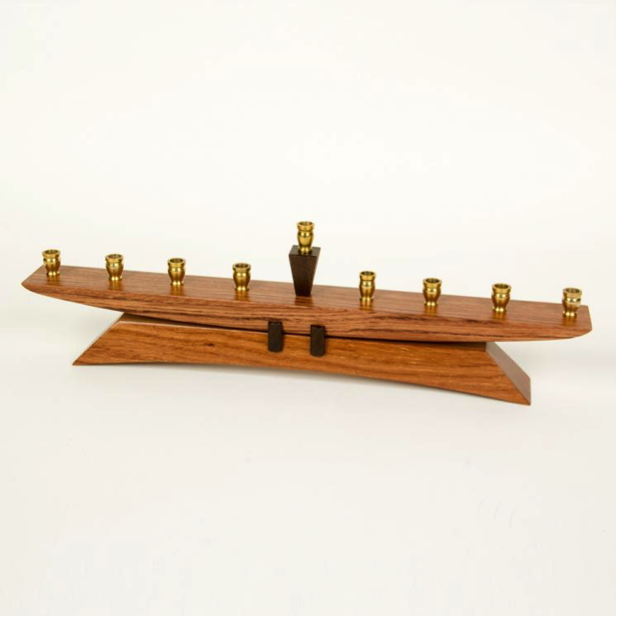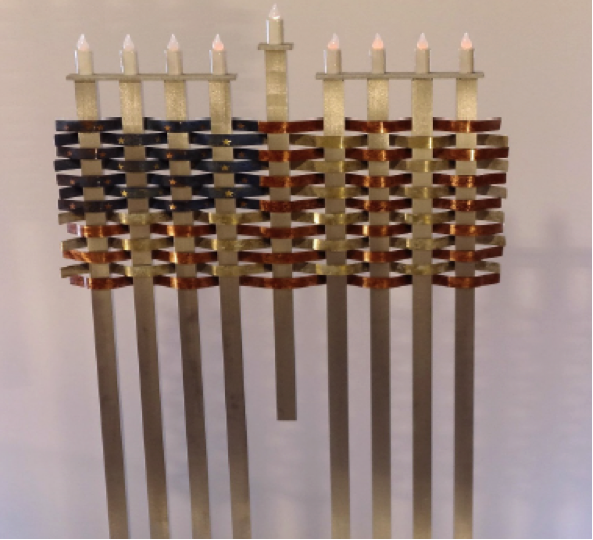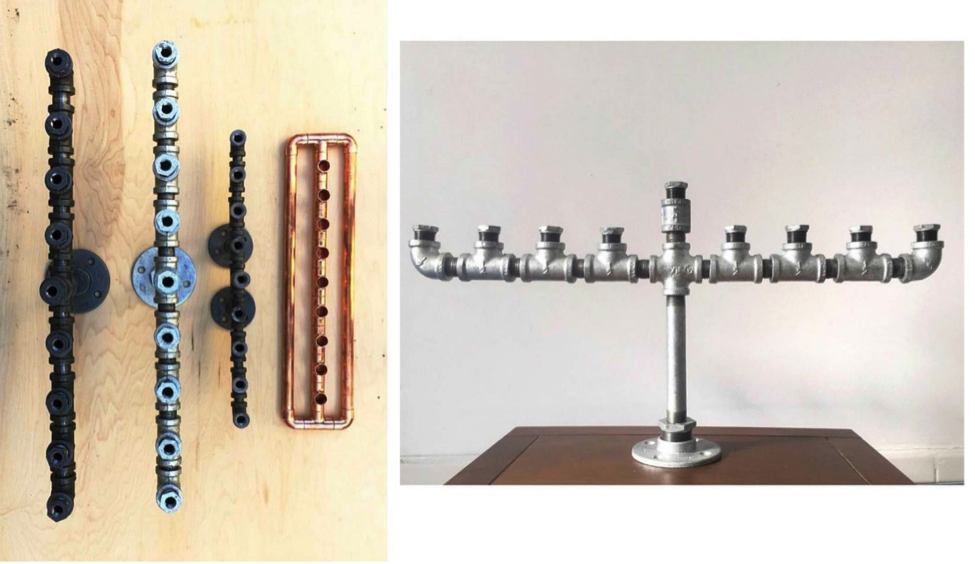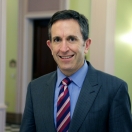
Last month, the White House called on readers to help us find special menorahs for this year’s White House Hanukkah receptions, asking, “What’s the story behind your menorah?” The announcement stated that we were looking for recommendations for menorahs to use for the candle lighting ceremonies that told a story – a story about family, community, or continuity of Jewish life here in the U.S., in Israel or around the world.
Within one week, we received 54 submissions (3 X chai!) from throughout the country, with stories spanning the centuries and the world. Some of the submissions included: a Sephardic menorah from the 14th century; the oldest American menorah – made of tin; a menorah by a prize-winning architect; a menorah made to commemorate 9/11; a menorah made entirely from reusable, recycled parts; a menorah honoring religious freedom made by Jewish Day School students from Northern California following their trip to Washington to visit the FDR Memorial; an Art Nouveau menorah made in Paris in the 19th century; a menorah made to look like a row of brightly colored doughnuts; a menorah incorporating the Washington, D.C. skyline; a menorah holding cans of food to donate to the homeless; and several menorahs with incredible stories of how they had been buried or hidden during the Holocaust, survived, and passed down through generations of families.
I am excited to share the two menorahs that will be used in the candle lighting ceremonies.
Watch the President host two Hanukkah receptions and light these menorahs.
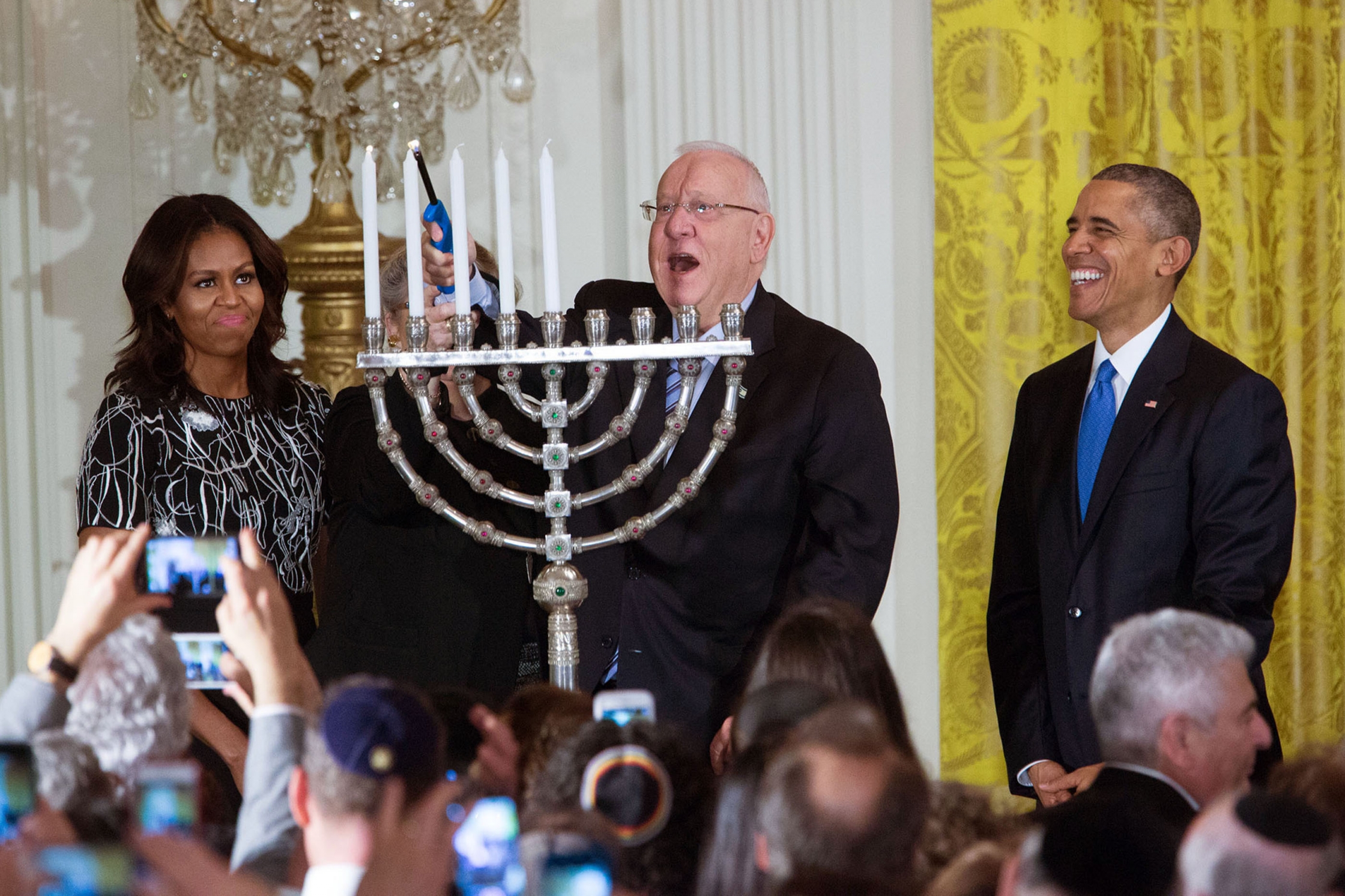
The first selection, which will be lit by the Israeli President Reuven Rivlin and his wife, Mrs. Nechama Rivlin, is a menorah from the North Carolina Museum of Art’s Judaic Art Gallery. The menorah was made in Israel during the 1920s by a pioneer designer, Ze’ev Raban, who trained in Europe and blended European, Jewish and Palestinian Arab design elements to create a new aesthetic for Jewish art in what would become the State of Israel. The design elements of this menorah underscore a theme of coexistence, and its presence in the collection of the Judaic Art Gallery in North Carolina highlights the ties between American Jews and Israeli Jews and the vibrancy of Jewish life in the American South.
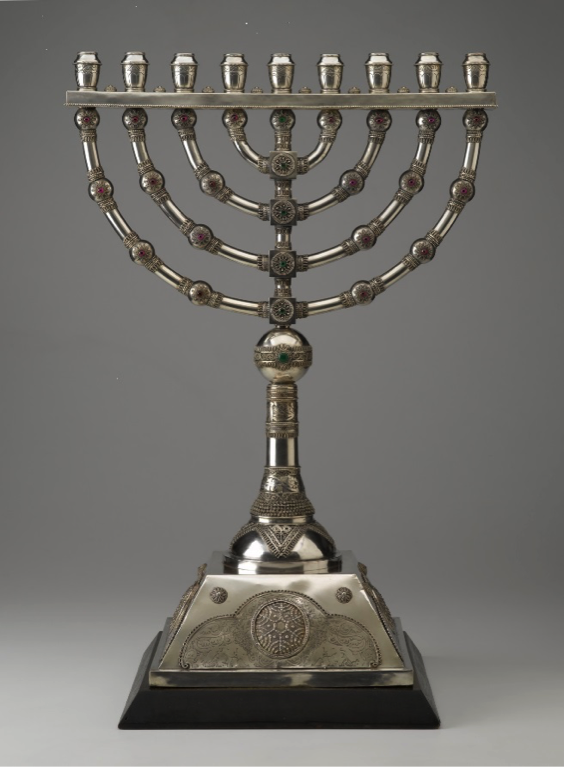
Thieberger Menorah
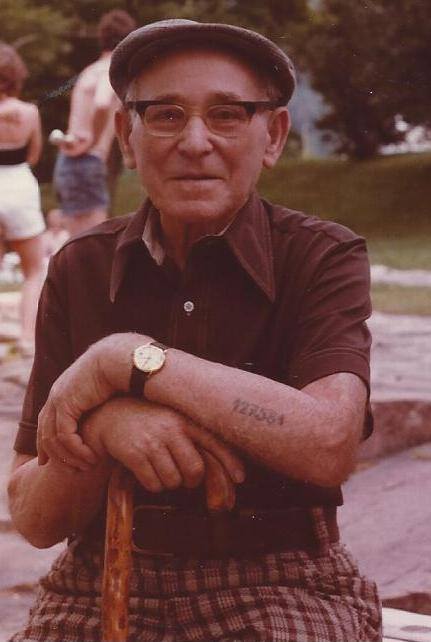 The second selection is a menorah made by Erwin Thieberger, a Holocaust survivor who was a refugee to the U.S. after World War II. When Thieberger was an inmate in one of the sub-camps of Auschwitz, he made menorahs from cement nails and solder. After the war, he settled in the Washington, D.C. area, and made modern menorahs from similar materials, hearkening back to the ones he made during the War. Thieberger was dedicated to creating a living reminder to the spirit of Hanukkah and the Jews’ continual fight for freedom and survival.
The second selection is a menorah made by Erwin Thieberger, a Holocaust survivor who was a refugee to the U.S. after World War II. When Thieberger was an inmate in one of the sub-camps of Auschwitz, he made menorahs from cement nails and solder. After the war, he settled in the Washington, D.C. area, and made modern menorahs from similar materials, hearkening back to the ones he made during the War. Thieberger was dedicated to creating a living reminder to the spirit of Hanukkah and the Jews’ continual fight for freedom and survival.
This menorah is owned by the Leidman-Golub family from Silver Spring, Maryland and Indiana, Pennsylvania. Mary Beth Leidman and David Golub light the menorah each year and retell its story, and have passed along the sense of responsibility and service that the story evokes to their son, Matty Golub, who is currently a Lieutenant in the Navy. At the evening reception, the menorah will be lit by Manfred Lindenbaum, a Holocaust survivor. Lindenbaum was born in Germany, deported to Poland, and escaped to England with his brother via the Kindertransport. He will be joined at the candlelighting by his granddaughter Lauren Lindenbaum. In 2014 at the age of 81 Lindenbaum traced his refugee flight backwards, on a bicycle, with his children and grandchildren, crossing the border of Poland and Germany on World Refugee Day, to honor the memory of his sister Ruth and his parents, who perished at Auschwitz.
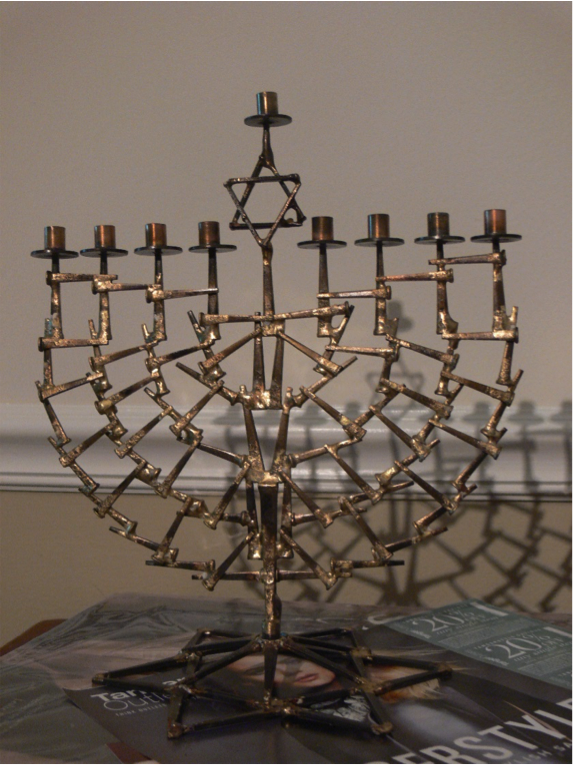
Some other highlights include:
The Richard Meier Jewish History Menorah
The Richard Meier Jewish History Menorah comes to the White House from Arthur Freeman, a retired State Department official and menorah collector from Potomac, Maryland. Meier is an established architect and Pritzker Architecture Prize winner. The first five candleholders (from left to right) represent locations of Jewish expulsion: Egypt, Roman Palestine, France, England, and Spain. The sixth candleholder represents the emancipation of Jews and the expansion of the Jewish population in Vienna around 1890, the seventh candleholder represents pogroms in Tzarist Russia and the eighth candleholder is a reminder of the Holocaust. This menorah acknowledges the indomitable will of the Jewish people to live despite overwhelming adversity. The original tin menorah, the common material of simple Hanukkah lamps in Eastern Europe, is owned by the Israel Museum in Jerusalem. This menorah is being displayed at the White House during the Hanukkah receptions.
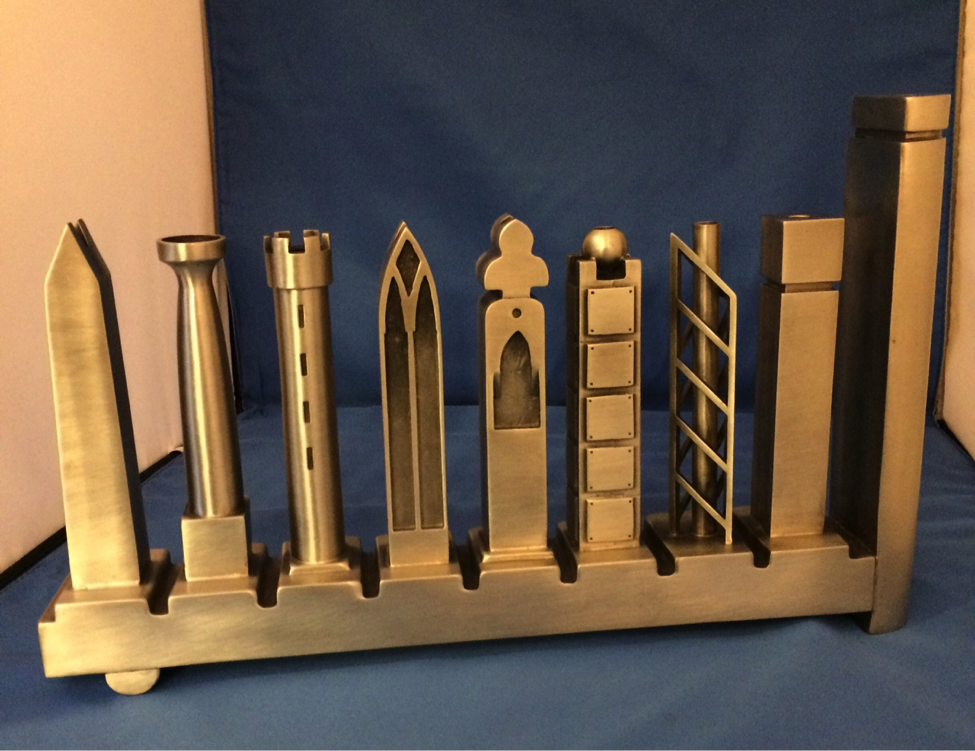
Eichenwald Menorah
The Eichenwald Menorah, recommended by Laura Rigge of the Jewish Federation of the Lehigh Valley in Pennsylvania, is owned by Jeanette Eichenwald of Allentown. Her menorah is a family heirloom that survived the notorious Dachau concentration camp. On Kristallnacht, November 9, 1938, Eichenwald’s father and grandfather were arrested by the Nazis in Vienna and sent in cattle cars to the Dachau Concentration Camp. As Hanukkah was approaching, Eichenwald’s grandfather managed to grab the family menorah. As prisoners in the camp, the men agreed to attempt to light the menorah, under penalty of severe punishment if discovered by the Nazis. For wicks they used fraying fibers from the their thin cotton uniforms, for oil they saved tiny bits of fat from their meager portions, and to obtain a match, another inmate bartered his wedding ring to a guard. On the first night of Hanukkah, they miraculously lit the menorah undetected, but on the second night the men were caught, severly beaten, and their menorah was thrown into a fire by a Nazi guard. Days later, an inmate discovered that the menorah had survived the fire and buried it in the concentration camp. Eichenwald’s grandfather was murdered, but her father survived the war, blind from the beatings he received that second night of Hanukkah. Years later, that fellow inmate uncovered the menorah and sent it to the Eichenwald family. It showed up one day at their home in Philadelphia. Now, the menorah stays on Eichenwald’s mantle, a family heirloom and a symbol of remarkable resolve in the face of evil. “It lived to see such agony and such pain, but its true meaning is light,” Eichenwald said in an interview. “The true meaning of Chanukah is religious freedom, to always stand up against evil.” The menorah is still lit by the family every year. While the pewter has been bent, the power of its story remains unbroken. Eichenwald brought the menorah to display at the White House during the Hanukkah receptions this year.
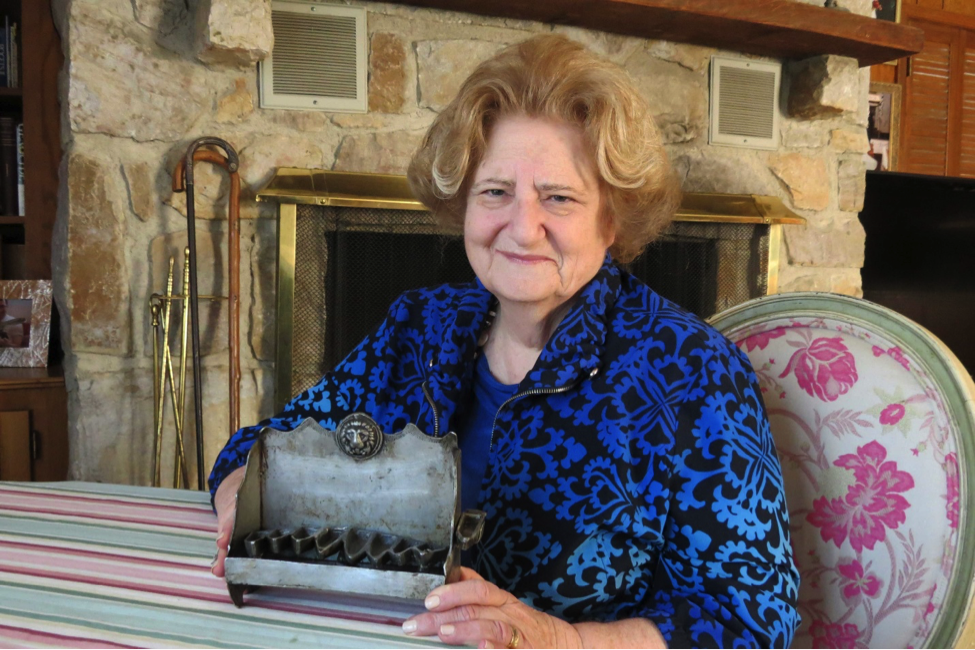
Religious Freedom Menorah
Though millions of visitors pass by the Franklin Delano Roosevelt memorial every year, the students at Yavneh Day School, a Jewish day school in Los Gatos, California, were impacted profoundly by its messages of Freedom of Speech, Freedom of Worship, Freedom from Want, and Freedom from Fear. In this spirit, the middle school students at Yavneh Day School created the Religious Freedom Menorah. It was recommended to us by Rabbi Laurie Hahn Tapper, the Director of Jewish Studies and Rabbi at the school. Yavneh Students researched historical and contemporary figures who have worked to advance freedom for people of all backgrounds, and included the images and words of leaders such as George Washington, Reverend Dr. Martin Luther King, Jr. and Emma Lazarus on the face of the menorah. The finished product, filled with the names, faces and teachings of American and Jewish heroes, reminds the students of the privilege and responsibility of being a Jew and an American. The quote written at the base of the menorah, credited to the famous mystical Rabbi and founder of Hassidic Judaism, the Baal Shem Tov (c. 1700-1760), reminds the students that they, too, can be heroes as well: “From every human being there rises a light.”
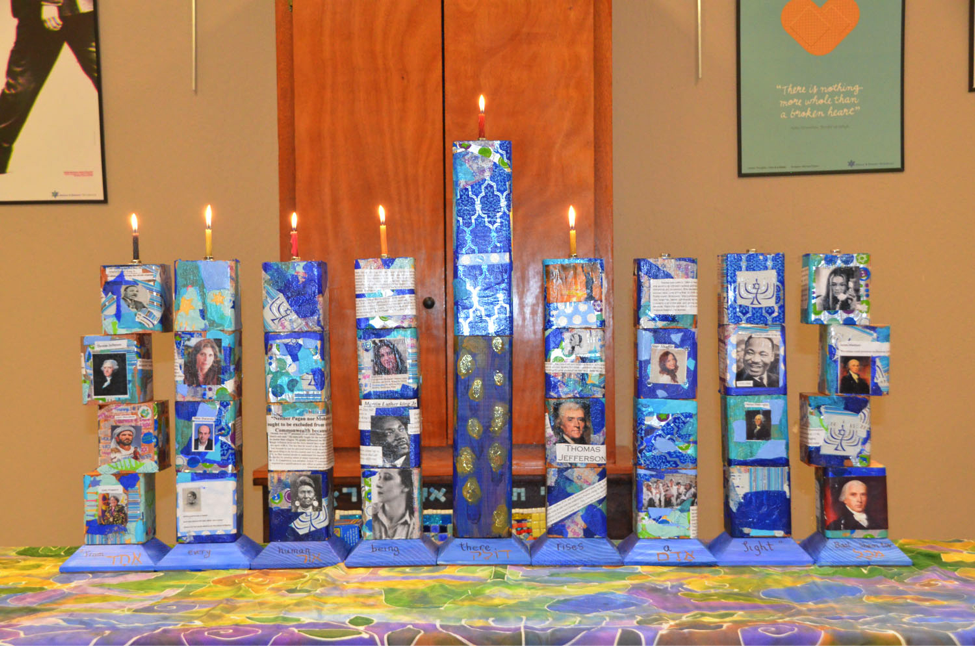
The Liberty Bell Menorah
The Liberty Bell Menorah, by Manfred Anson, was recommended by Aaron Feingold, who has a collection of some 200 menorahs. The Liberty Bell at Independence Hall in Philadelphia is inscribed with the timeless message from Leviticus (25:10), "Proclaim Liberty Throughout All the Land Unto All the Inhabitants thereof." This phrase is featured prominently on the menorah and is a strong reminder of the connection between the Hanukkah holiday and the fight for liberty. Each bell holds a candle, and on the rim of each bell is the name, birth date, and year of death of a famous American Jewish patriot who devoted his or her life to fighting for liberty, freedom and the revolutionary cause.
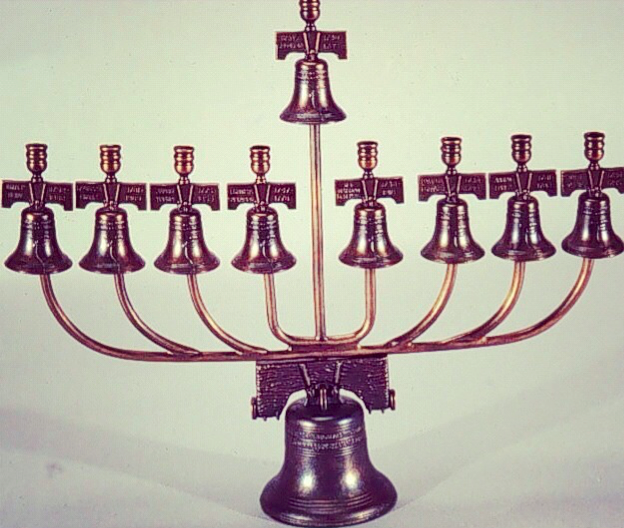
Congregation Mickve Israel – Spanish/Portuguese Menorah
The Spanish/Portuguese menorah was recommended to the White House by Congregation Mickve Israel in Savannah, Georgia. On July 11, 1733, just five months after General James Edward Oglethorpe established the colony of Georgia, 42 brave pioneering Jews arrived in Savannah. The congregation they established 282 years ago survived the American Revolution and Civil War, and has made significant contributions to civic and cultural life in Savannah. It is the oldest Jewish congregation in the South and the third-oldest in the United States. This particular menorah was created in Spain or Portugal in the 15th-16th centuries for the use of crypto-Jews, Jews who were forced to hide their Judaism during and after the Spanish Inquisition and subsequent expulsions of Jews from Spain and Portugal. This menorah can be folded and hidden away, which allowed Sephardic Jews to practice their religion in secret and avoid persecution.
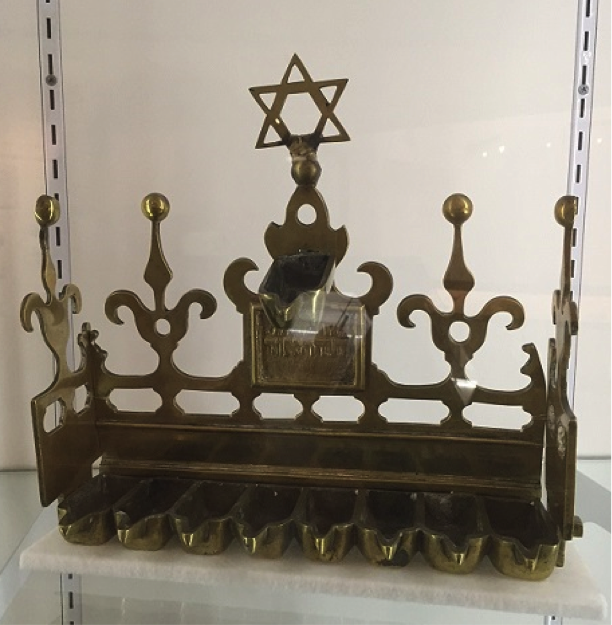
Bellefaire Menorah
The story of the Bellefaire Menorah was told to us by David Rubin. Rubin recounts that in 1944 or 1945, following his father’s death from tuberculosis, he was sent to Bellefaire, a Jewish institution in Cleveland, Ohio for orphans and children from broken homes. Shabbat observance and major Jewish holidays were an ongoing part of life at Bellefaire. This menorah was a gift to Rubin from the men’s club at the local Temple of Rabbi Abba Silver. Rubin was enchanted by the menorah, which symbolized for him both the miracle of Hanukkah and a connection to his own father, both physically and emotionally so distant from him. The kindness and generosity of this man, the invisible hand who crafted this menorah and his name on its base, has stayed with Rubin his whole life.
9/11 Solidarity Menorah
In 1990, Michael and Bonnie Berkowicz were commissioned by the Port Authority of New York and New Jersey to create the first Hanukkah menorahs to stand in the lobbies of the World Trade Center. The 9/11 Solidarity menorah was created by the team as a memorial to those who perished in the World Trade Center attacks on September 11, 2001, and to honor the Shomrim Society, the Jewish police officers fraternal group within the Port Authority, who stood guard at ground zero. The menorah was first lit at 7 World Trade Center on the last night of Hanukkah in 2001. The menorah is constructed from materials symbolizing the World Trade Center, with the American flag woven through to symbolize strength and resilience.
Jonah’s Menorah
Promoting sustainability and recycling in the Jewish world, ReJews Recycling’s Henry Goodelman recommended Jonah's Menorahs, an industrial, steam-punk designed and upcycled product. It is also a kosher menorah, crafted from 100% American-made recycled parts, and fit for both candles and olive oil.
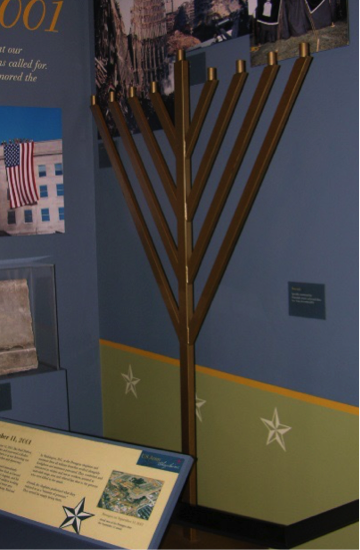 Ground Zero Menorah
Ground Zero Menorah
The Ground Zero Menorah, recommended by Army Chaplain Shmuel Felzenberg, is currently displayed at the Chaplain museum at Fort Jackson, South Carolina and was custom-made shortly after September 11th. It was used in December 2001 for Hanukkah lighting at Ground Zero, as workers worked around the clock at the site. The menorah was lit that year by a Jewish U.S. Army Chaplain who was the Command Chaplain at Ground Zero, and its lighting brought hope during a time of darkness and despair.
